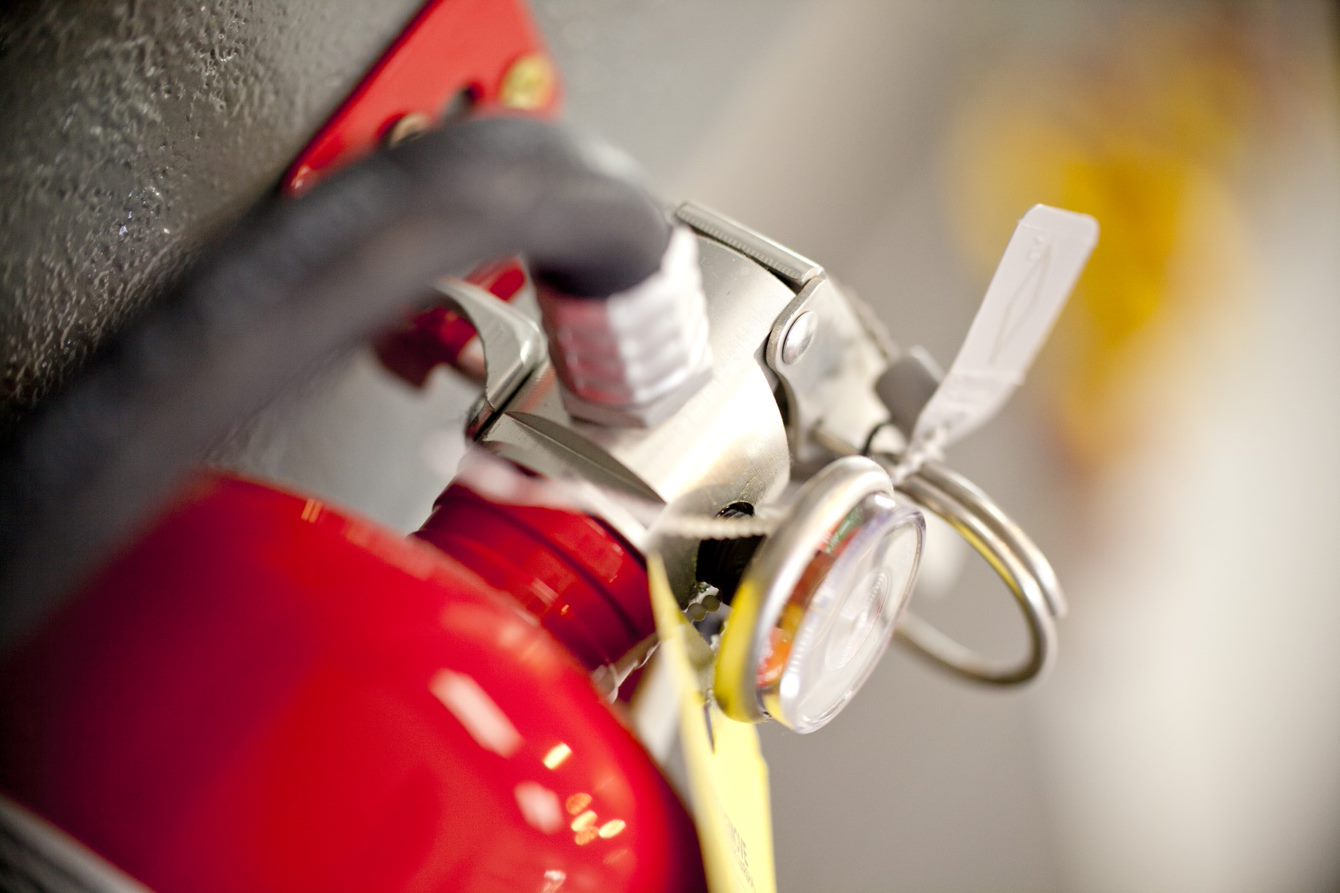
Fire Extinguisher Clean Up
When a minor fire breaks out at home or in your business, a portable fire extinguisher is a fast and effective response. Once the fire is out completely, it's essential to know how to clean up fire extinguisher dust and chemical residue so you can assess the real damage and mitigate health risks. The Department of Environmental Health and Safety at the University of Colorado/Boulder reports, "Type ABC multi-purpose fire extinguishers contain ammonium phosphate and/or ammonium sulfate powder that can be irritating to the eyes, skin and lungs." Because the chemicals used in various fire extinguishers can be harmful to humans (and pets), it's important to follow proper cleaning procedures after using one.
Know Your Fire Extinguisher
Before beginning any fire extinguisher cleanup, first identify the chemicals used as the dousing agent. An air-pressurized water fire extinguisher or CO2 fire extinguisher won’t leave behind harmful chemicals. All it usually takes to clean up these types of fire extinguisher is drying the area to remove any lingering moisture. If any foam is left behind, dilute it thoroughly, dry and then sanitize the area if needed.

**Tip:** All fire extinguishers should have a label or tag that tells you what type of fire extinguisher it is and what it contains—water, foaming detergent, dry chemicals or wet chemicals. Residue from a dry, wet or multi-chemical fire extinguisher will have more intensive cleaning needs.
How to Clean Up Fire Extinguisher Powder
A dry chemical fire extinguisher with non-toxic sodium bicarbonate or potassium bicarbonate leaves behind a powdery residue. This residue can be removed safely using a vacuum. Before using the vacuum, remove any larger pieces of debris that may have been left after the fire. To keep from inhaling the powdery residue while vacuuming, wear a dust mask. Also wear goggles and protective gloves to protect against a potential allergic reaction. It may take several passes with the vacuum to remove the fire extinguisher residue completely. If you're cleaning any area used as a food prep or cooking space, it's essential to clean and sanitize the space thoroughly after removing the fire extinguisher residue. A multi-purpose dry chemical fire extinguisher containing mono ammonium phosphate requires a different method of cleaning. Do not vacuum residue left by mono ammonium phosphate. This dousing agent residue must be cleaned by hand – and time is of the essence. If mono ammonium phosphate remains on sensitive electronics and other equipment it can cause further damage. Wipe the residue away with a clean cloth. On surfaces that can be wet-washed, clean with a 1:1 solution of warm water and baking soda. Thoroughly dry and sanitize the area as needed. Wet chemical fire extinguishers used to douse deep fryer fires won't leave behind any powdery residue. To clean up after using this type of fire extinguisher, first check that all fuel sources to the affected kitchen equipment are turned off and that the surfaces are cool enough to touch. Wear safety gear including goggles and rubber gloves to prevent any contact with cleaning agents or chemical residue. Clean the affected area with hot, soapy water and rinse thoroughly. Dry, then follow your regular cleaning and sanitizing protocols.
.2108241037315.jpg)

Safety tip: Throw away all food or cooking grease that has come into contact with any type of fire extinguisher dousing agent. A portable fire extinguisher is an essential safety device for all homes, business and other public buildings. However, some fires are too big for portable extinguishers. Know when to call 911 for the help of professional fire fighters. Regardless of fire size, ServiceMaster Restore can provide professional fire cleanup services with fast, effective remediation for any smoke and water damage as well.
For more information about how we can restore your property after fire control efforts, contact us now or find your location.

